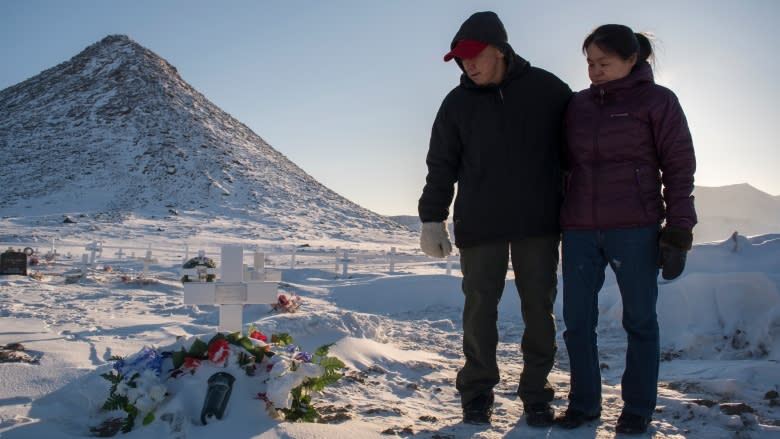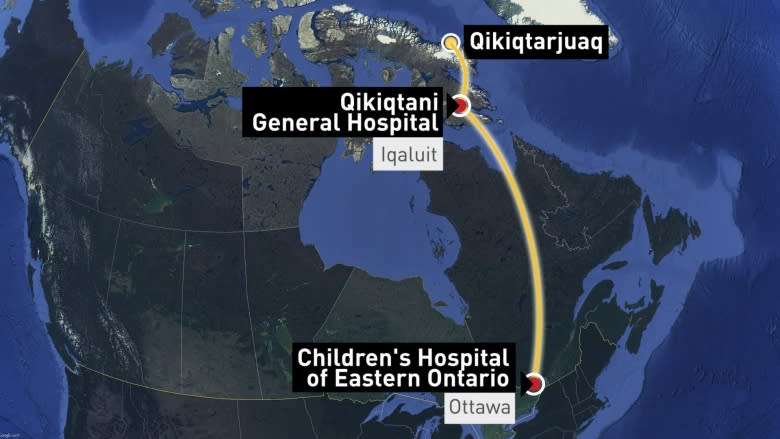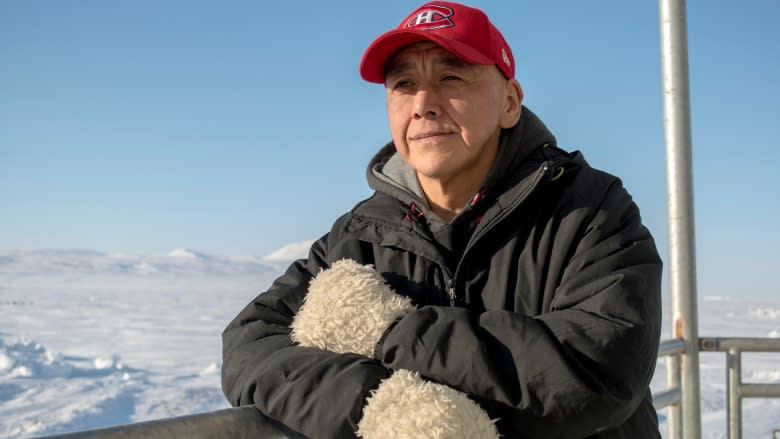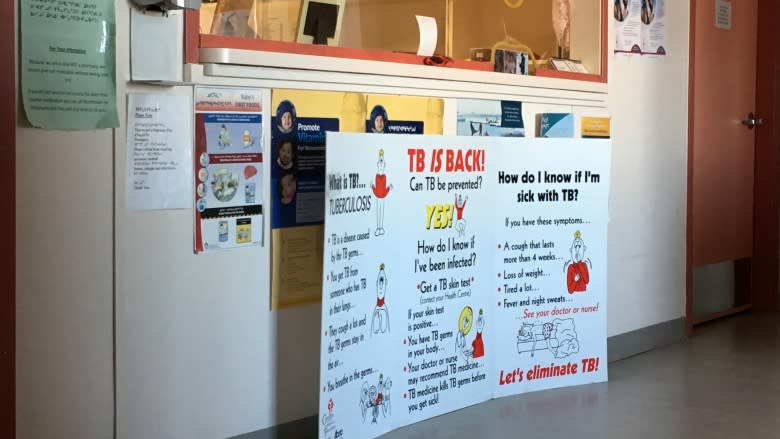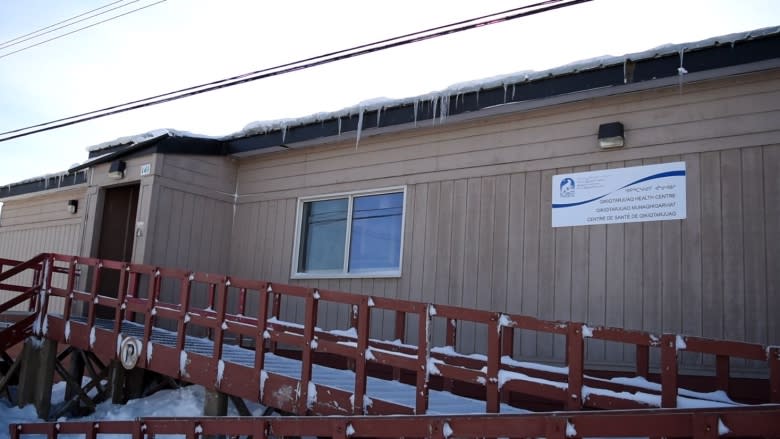'She was my only girl': Nunavut teen's death sheds light on failures in fighting TB
Matthew Kilabuk walks into the Inns North hotel in Qikiqtarjuaq, Nunavut, and begins blowing on his hands to warm them up. It is -30 C outside, without wind chill.
Kilabuk, a well-known local artist who's trying to sell some of his drawings, is wearing mitts but the sheepskin is tattered and thin. When asked why he doesn't have a better pair of mitts, he shakes his head.
"My daughter made these for me before she died," he replies.
Ileen Kooneeliusie was 15 years old when she died in January from tuberculosis.
In December, Kooneeliusie's mother, Geela, brought Ileen to the local health centre after she complained of headaches and shortness of breath. She was eventually flown to a hospital in Ottawa.
Despite the staggeringly high rate of tuberculosis in Nunavut — 26 times the national average — Geela says Ileen was only diagnosed with TB a few hours before her death.
"My daughter was a happy girl and she was always welcoming to people; she used to like hanging out with her friends," Geela says in Inuktitut.
"She was my only girl."
The case of Ileen Kooneeliusie raises questions about how a person living in a territory with a high incidence of tuberculosis could not be diagnosed in time to save her life.
Last month, Canada's auditor general highlighted gaps in Nunavut's health care system, particularly when it came to language barriers with Inuit patients. But one TB expert in Toronto says the questions in this case extend beyond the care Kooneeliusie received in Nunavut.
"The World Health Organization runs programs all over the world in very poor countries," says Dr. Michael Gardam, the medical director of the tuberculosis clinic at Toronto Western Hospital.
"There's no reason why we should having a problem managing tuberculosis in Canada."
High rate of tuberculosis
In 2015, the TB rate among Inuit was 166.2 per 100,000 — 270 times higher than the rate in the Canadian-born non-Indigenous population, according to a report this month from the Public Health Agency of Canada.
Since January, there have already been 21 new cases of TB diagnosed across Nunavut. Twenty-five per cent of all of Nunavut's reported TB cases in 2015 were among children and youth younger than 24 years old.
Qikiqtarjuaq, which has a population of about 600, is one Nunavut hamlet that is actually equipped with a TB nurse. The Nunavut Department of Health says not all communities have them, but staffing is adjusted depending on TB activity within the community.
While the department wouldn't reveal how many of the 21 cases so far this year arose from Qikiqtarjuaq, it says 13 of those cases are in the Qikiqtaaluk region – which was also home to more than 90 per cent of Nunavut's TB cases between 2007 and 2014.
Geela Kooneeliusie says Ileen's symptoms began with headaches as far back as two years ago. She says Ileen had shortness of breath, too, but nurses in Qikiqtarjuaq diagnosed it as panic attacks.
In the week leading up to her birthday on Dec. 22, 2016, Ileen got worse.
"She was coughing a lot more than usual," Geela says.
"She would hang out with her friends, but then came home not long after because of her shortness of breath. She started being scared."
Geela took Ileen to the health centre three days before her 15th birthday. Geela says nurses put Ileen on intravenous therapy and called for a medevac flight. But the flight was cancelled – the family still doesn't know why – and Ileen was sent home with Tylenol and Motrin.
In the following days, Ileen's condition worsened. Geela says she took her daughter to the health centre again — and again they were sent home.
Ileen continued to deteriorate. She lost control of her bladder and bowels and couldn't walk.
"She could barely do anything. She couldn't go to the washroom and she crawled to get around because she couldn't walk," Geela says.
"She was scared for herself."
On Dec. 27, Ileen was medevaced to Iqaluit. She had a chest X-ray and Geela says doctors diagnosed her daughter as having pneumonia. She was put on a breathing tube and flown to Ottawa.
Doctors at the Children's Hospital of Eastern Ontario (CHEO) treated Ileen for pneumonia, though it's unclear if they made their own diagnosis or worked off information from doctors in Iqaluit.
Dr. Gardam says the symptoms for TB and other causes of pneumonia are similar but there were "red flags" in Ileen's case.
"The big difference between tuberculosis and other causes of pneumonia is that most bacterial and viral causes come on quite quickly. Tuberculosis tends to come on much slower," he says.
"The big clues [in this case] would be the fact that if whatever lung symptoms she had weren't getting better after several weeks, that's certainly a red flag. Then her having difficulty, suggesting she had something going on in her spine or in her brain, would be an even bigger red flag."
As Ileen lay in the ICU in Ottawa, her organs shut down, one by one. Geela remembers her daughter going blind and having seizures.
On Jan. 14, doctors pulled Ileen's family aside.
"By around 7 p.m., the bosses came to meet with us," Geela says.
"They told us that they tested her lung and took some liquid out. That's when they found out it was active TB. And within the same night, when they found out, she died."
By the time doctors realized Ileen was fighting tuberculosis, Geela says the disease had spread to both lungs and to her brain.
"After they found out that it was TB, they realized that all those headaches, those pains, were all coming from TB. They also found out that TB caused some of her brain cells to explode. That's what we understand."
Deaths from tuberculosis
According to the Public Health Agency of Canada report, eight per cent of people with TB in Canada in 2014 died during treatment.
"People certainly still die of tuberculosis in Canada," says Dr. Gardam.
"I think one of the main reasons for that is less about the treatment and more about often people don't get diagnosed quickly enough."
In its Inuit-Specific Tuberculosis Strategy, Inuit Tapiriit Kanatami cite overcrowded housing, lack of food security and barriers to accessing health care, such as geography and language, as factors in the high rate of TB among Inuit.
Geela and Ileen's father, Matthew Kilabuk, believe these issues are real.
"We should all be working together but the health centres are just playing with people's lives, especially Inuit," Geela says.
"I want to see people getting the help they need."
Coroner's investigation
The Office of the Chief Coroner of Ontario has launched an investigation into Ileen's death. Not only is it looking into the level of care given to her in Ontario but it's working with Nunavut's chief coroner to examine what happened in Nunavut.
Nunavut's Department of Health declined CBC's interview request but in a statement, Health Minister George Hickes said the government is conducting an internal review – formally called a "Quality Improvement Review."
Hickes also said Ileen's death is being reported as a "critical incident" under the department's Community Health Nurse Administration Manual.
CHEO says it can't address specific cases due to privacy issues but that every death at the hospital is reviewed with the aim of improving care, and that it co-operates fully with coroner's investigations.
Back in Qikiqtarjuaq, much of Ileen's belongings have been packed away. Her artwork is stored and her bedroom is bare, except for the names of friends that she had written on her walls.
Asked what needs to happen to prevent another death like Ileen's, her mother says the health centres need Inuit staff who speak Inuktitut.
"Inuit have a better understanding of the Inuit lives," Geela says.
"The job of the health centre is to help people. When we are trying to get help from them they don't believe in what we're saying."

